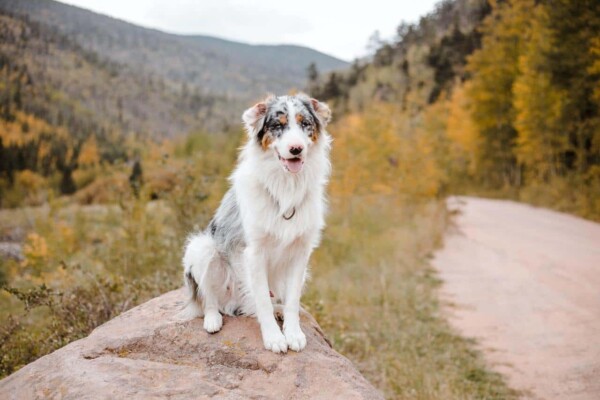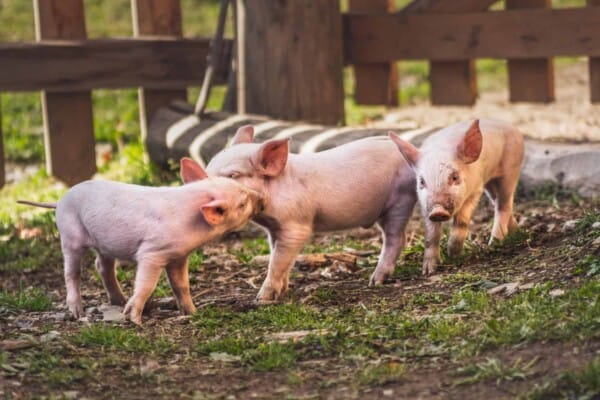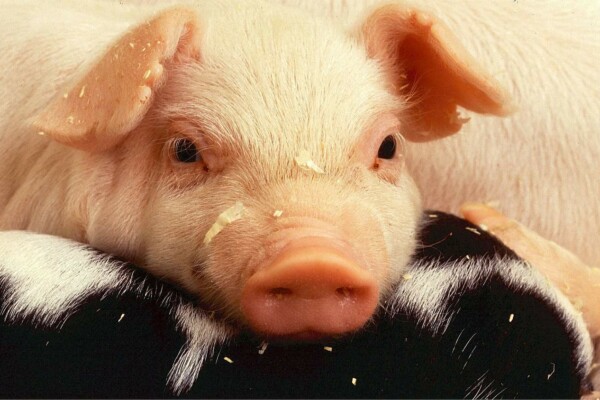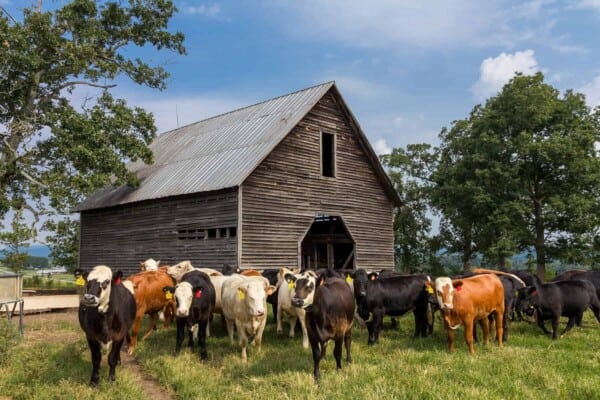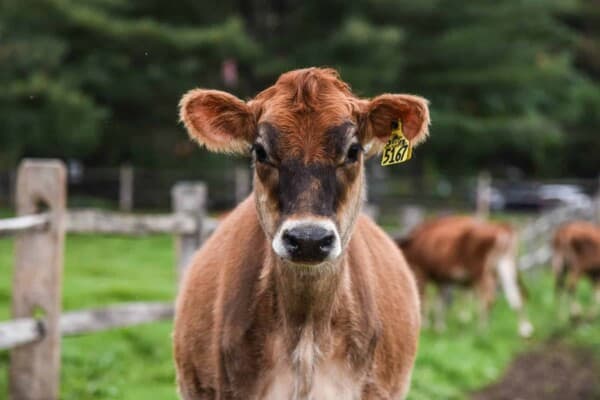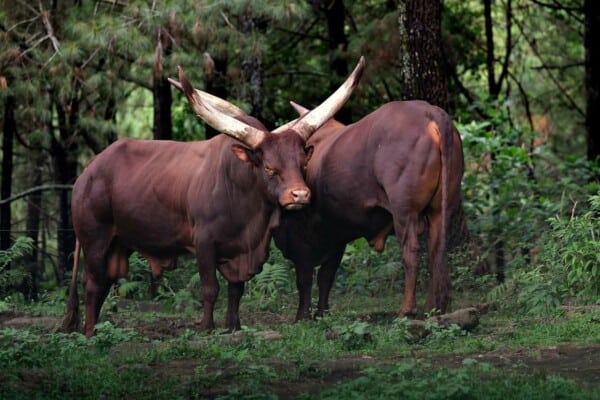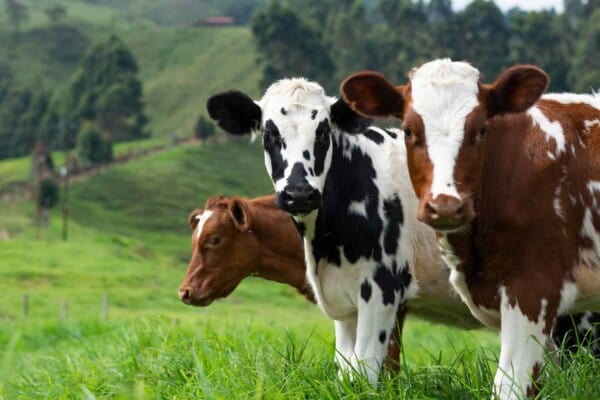
Raising sheep as a profitable farming business imposes an appropriate diet for optimal animal husbandry and production. Sheep nutrition should include water, energy (carbohydrates and fats), proteins, minerals, and vitamins. Under certain conditions, veterinarians also recommend additional nutrients to be added to the daily nutrition of sheep.
The production cycle of sheep
Feed and nutritional requirements vary during the production cycle of sheep depending on their development stage.
Maintenance stage
This is the production stage with the lowest nutrition requirements. Feeds of lowest quality can be used, including pasture or crop residue or poor quality. Salt and minerals are still required to supplement the diet.
Pre-breeding stage
Prior to breeding, it’s required to increase dietary energy. In most cases, this can be done by increasing the level of grain 30 days prior to ram turnout and for about three weeks after the ram turnout. Minerals are very important during this stage.
Late gestation stage
These are the last 40-45 days before lambing. Energy requirements are substantially increased, but overfeeding may cause dystocia.
Lactation stage
This stage also requires a high level of energy. Mineral supplementation is also important. The milk production peaks 2-3 weeks after lambing and it declines to the lowest point by 8-10 weeks.
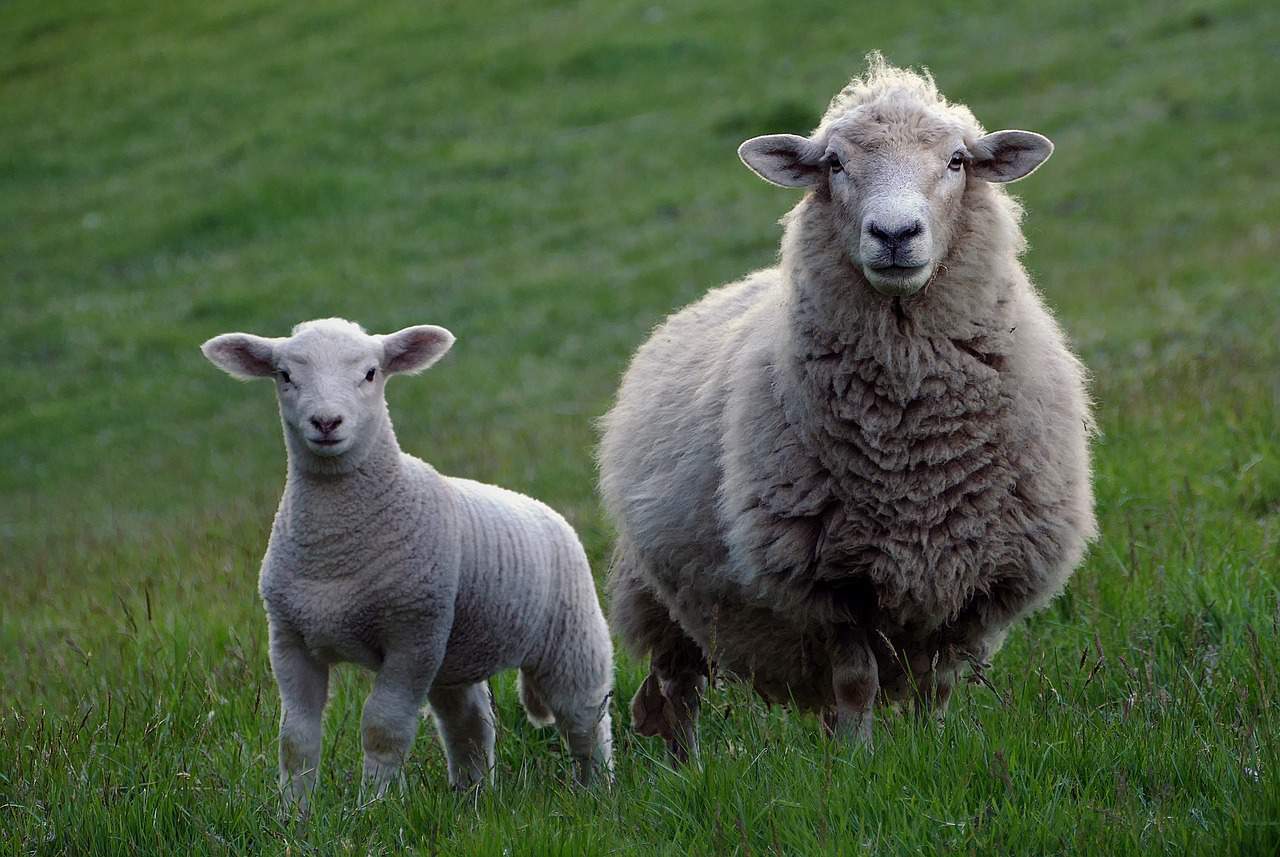
What do sheep eat?
For most of the time sheep eat grass, forbs, clover and other plants found on pastures. They particularly like forbs. Forbs are flowering plants with broad leaves, different from grass. Sheep prefer them because they are very nutritious. However, compared to other farm animals, such as cattle, sheep tend to eat a greater variety of plants, thus having a more nutritious diet.
Sheep will spend an average of seven hours per day grazing, especially around dawn and late afternoon. Therefore, if a supplement is fed to pastured sheep, this should be made in the middle of the day, to not disrupt their normal grazing patterns.
As they enjoy grazing various plants, sheep can eat different plant depending on the geographical area. Forages from temperate climates are usually more nutritious than those from tropical areas. Regardless of the region, all forages are more nutritious if they are consumed in a vegetative state.
Pasture requirements
The size of the pasture depends on the quality of the soil, on the amount and distribution of rainfall and on the efficient pasture management. For example, the pasture from dry climates can’t feed the same amount of sheep as the pasture from moist climates. The same goes for pastures during the wet season as opposite to pastures during the dry season.
Considering that plants have a different growth rate, if different forage species are planted on the pasture, sheep can have enough grazing year-round. Snow can be the only limiting factor in providing enough grazing.
It’s important to note that the reproductive rates and lamb growth are lower in arid climates and as a result, the wool production is more important in arid or semi-arid climates. Less nutrition is required to produce high-quality wool in comparison to producing milk or to raise lambs.

Other types of feed
When fresh feed is not available, sheep are usually fed stored or harvested feeds, such as silage, hay, green chop, and crop by-products. Hay is just grass that has been cut, dried and stored for feeding purposes.
Silage is green forage that has been fermented and stored in silos or in other storage facilities and systems that keep the air out. Moldy silage must be avoided because it can cause certain diseases in sheep.
In some cases, pasture plants are cut, chopped and brought to sheep when they don’t have the possibility to graze on their own.
Grains are often fed to sheep that have higher nutritional needs, for example for pregnant ewes during the late gestation period, ewes that are nursing two or more lambs, or for lambs that have the genetic potential for rapid growth. Sheep are usually fed corn, barley, wheat, and oats.
Protein sources such as soybean meal or cottonseed meal are also added to the diet, along with vitamins and minerals. Like other ruminants, sheep should also have some fibrous feed in their diet.
If they eat too much grain, sheep can experience digestive problems, so it’s best to introduce grains slowly and gradually into their diet. Furthermore, grain consumption must be controlled and regulated.
By-products
Sheep can be fed various crop and food processing by-products which otherwise would go to waste, such as peanut hulls, soybean hulls, wheat middling, whole cottonseed or corn gluten feed. Some by-products should be included in the diet of sheep only in strictly limited amounts, such as corn used in the production of ethanol, because it can contain high levels of sulfur and phosphorus.
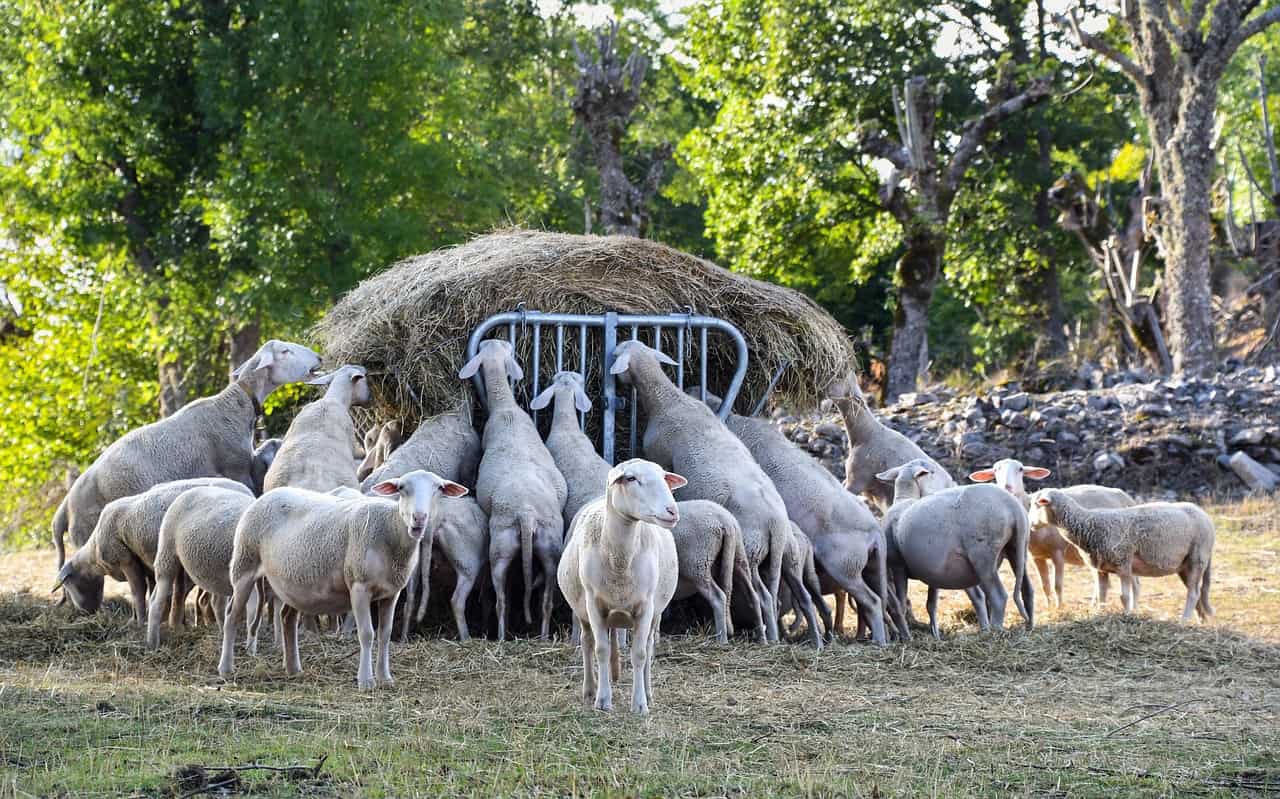
The main components of sheep nutrition
Water
A source of water should be available at all times. The water should be fresh, clean and easily accessible. Usually, in temperate environments, it is recommended to provide around 3.8 liters of water per day for ewes who receive dry feed during winter months, 5.7 liters per day for ewes that are nursing lambs and 1.9 liters water per day for finishing lambs. For many range areas, water is a limited resource. Even when it’s available, it may be not fit for consumption because it’s filthy or it has a high mineral content.
To ensure the best production, the water availability for sheep should be monitored daily regardless of the weather conditions. In certain cases, where the costs of providing sheep water on a daily basis may be too high, so it’s more economical to water range sheep just every other day. During periods of time and in regions where soft snow is available, range sheep don’t even require additional water, except when they are fed with dry feeds, for example with pellets or alfalfa. When there is snow, but it’s crusted with ice, make sure to break it to allow access for sheep. However, whenever it’s possible, it’s best for sheep to have unlimited access to fresh and clean water.
Energy
If the diet of sheep depends on grass and feed that are either rare or of poor quality, it’s important to provide an adequate level of energy. Fodder of poor quality, even in abundance, can’t provide enough energy available for maintenance and production.
The energy required for ewes is higher in the first 8-10 weeks of lactation. Because, after this period, milk production decreases and lambs start to eat on their own, the sheep energy requirement is reduced. The easiest way to evaluate the energy level in sheep ration is to perform and record the body fat layer using a 1-5 scoring system in which 1 is extremely thin and 5 is the maximum layer of fat (extremely obese). The determination is made by palpation of the fat zone covering the spiny processes and the transverse processes in the lumbar region. The most healthy and productive sheep will have a score of 2-3.5. Sheep with a score of 1-2 should be examined and fed so as to reach a higher score, while those with a score higher than 3.5 should be fed less. Diet changes should be made slowly, and a sudden reduction in total energy consumption should always be avoided, especially from the middle of the gestation period to the end of it.
Proteins
Good quality feed and pasture usually provide adequate protein for adult sheep. However, sheep do not digest poor quality proteins as effectively as cattle, and there are situations where they should be fed with a protein supplement with grass and mature hay, or during the winter. Therefore, a minimum of 7% of the protein in the diet is required for maintenance in most sheep.
Protein requirements depend on the stage of production (growth, gestation, lactation etc.) and the presence of certain diseases (internal parasites, dental diseases etc.). If available feed can’t provide the right protein percentage in the diet, then sheep should be fed with protein supplements, such as oleaginous meals (cottonseed flour, soybean flour) or mixed commercial supplements to meet nutritional requirements. The protein level should not exceed the requirements. Feeding with excess protein may be beneficial in case of excessive infestation with internal pests, but it leads to increased production costs and can also lead to a higher incidence of diseases (e.g. heat stress).
Sheep can convert non-protein nitrogen (such as urea, ammonium phosphate, and biuret) to rumen protein but less efficiently than cattle. This nitrogen source can provide at least some of the additional nitrogen needed in high energy diets with nitrogen: the sulfur ratio of 10: 1. In lamb finishing diets, the inclusion of alfalfa and a fermentable carbohydrate source increase the use of nitrogen.
Minerals
Like many other animals, sheep require the major minerals, which can be obtained from various sources. The diet of sheep usually contains enough potassium, iron, magnesium, sulfur, and manganese. To better assess the requirements for trace elements, it’s necessary to conduct specific analysis or to have a biopsy done of the liver tissue. Zinc and selenium deficiencies are identified through a blood analysis.
Salt is often used to supplement the nutrition of sheep because it’s a cost-efficient way to prevent mineral deficiencies in relation with sodium, chlorine, iodine, manganese, cobalt, copper, iron and zinc. Sheep need salt to provide economic gains, to reproduce and lactate. Mature sheep can consume approximately 9 grams of salt daily, while lambs only need half of this amount. Most sheep farmers provide 225-350 grams of salt per ewe on monthly basis. Salt should represent 0.2%-0.5% of the dry matter in the diet. Exceptions are made when the sheep have access to pasture in areas with an alkaline ground.
Calcium and phosphorus perform their functions in the body if they are present in ratios specific to the different species and categories of animals. In sheep, especially for young sheep, the calcium/phosphorus ratio may be up to 2.5 / 1 and in the case of advanced gestation in sheep – up to 2.5 / 1, and in the lactation period – 1.3 / 1. Failure to observe these values can lead to numerous negative effects on the animals’ body. Therefore, in mixtures of concentrates and in compound feed, calcium and phosphorus sources are indispensable, especially in animals with a high productive potential. Some of the most common calcium sources are eggshells, seashell flour or chalk fodder, while phosphorus is supplemented through monosodium phosphate, disodium phosphate, and tripolyphosphate.
Iodine deficiency is manifested through a lack of wool and goiter in lambs or goiter in adult sheep. This deficiency can be prevented by feeding stabilized iodized salt to pregnant ewes. Depending on the production level of the sheep, the diet should contain 0.2%–0.8% ppm of iodine.
Cobalt is found usually in legumes as they have a higher content than grass. Sheep require around 0.1 ppm of cobalt so it’s a good idea to feed them trace mineralized salt that also contains cobalt.
Copper is required especially for pregnant ewes and the necessary amount is usually provided by the forage. However, sheep are more susceptible to copper toxicity; therefore excessive copper intake should be avoided.
Selenium is required in the diet of sheep in quantities of around 0.3 ppm and it’s usually included in mineral mixtures. Higher levels of selenium, more precisely 7-10 ppm can be toxic.
Zinc is important especially for growing lambs that require approximately 30 ppm of zinc in their diet. Zinc deficiency is most common in other small ruminants such as goats, but it can be observed in sheep as well if they are fed excessive quantities of legumes, high in calcium.
Vitamins
The usual diet of sheep contains sufficient amounts of vitamin A, D, and E, but in some cases, vitamin supplements may be needed. The requirement for vitamin D is increased when there is not enough calcium and phosphorus in the diet, or when the ratio between these two elements is not balanced. Sheep fed on green feeds that are high in carotene during winter months or that are kept away from direct sunlight can suffer from vitamin D deficiency.
Vitamin E is present in the diet of sheep through natural resources such as green feeds and germs of seeds. However, this vitamin is poorly stored in the body, so daily intake is required. This vitamin should be supplemented in the diet when the sheep are fed poor-quality forage or hay.
Pasture fodder usually provides inadequate amounts of protein, energy, and phosphorus. These deficiencies worsen as fodder approaches maturity or stagnate in development. For this reason, it’s recommended to add phosphorus to the mineralized salt mixture, which significantly improves productivity.
One aspect that must be taken into account if sheep go through large distances and are exposed to weather factors (rain, temperature drops, etc.), is that this leads to increased energy consumption. If the dietary energy is not being ensured, the animals begin to lose weight, have a low productivity, and suffer from serious metabolic imbalances. To compensate for energy losses, an excellent remedy is using molasses.
When sheep are grazed on dried plains or fed with dried fodder, vitamin A supplements are indicated. Addition of 45-50 IU of vitamin A/ kg/day improves productivity in prolonged consumption (approximately 2 months) of dried fodder or degraded.
Considering these deficiencies, it’s necessary to prevent nutritional diseases by supplementing the feed ratios with vitamins, salt, minerals, energy, and protein. An extremely practical solution is the use of mineral blocks. Also, molasses enriched with vitamins and minerals is a good product that, on a regular basis, prevents the occurring of nutritional deficiencies.

